
Walking in the Mountains: A Woman's Guide

A Word of Thanks
W hile the concept, the writing and the walking were my own, I am grateful to a number of people for making this book what it is.
Dr. Chaya Rabnett was the source for most of the medical background and advice in this book. Chaya was intrigued by the medical aspects of various chapters and generously gave help, not only from textbooks, but from her long personal experience as a hiker as well.
I'd like to thank Tammy Soffer of Soffer Mapping, Jerusalem, whose fine map is the working model in Chapter 4. We worked together to provide a map that would enable a maximum amount of advice on map-reading, with a minimum of confusion. (Our map is based on one called Mount Washington and the heart of the Presidential Range New Hampshire, 3rd edition, 1989, Scale 1:20,000, published by the Appalachian Mountain Club, Boston, Massachusetts.) Professor Nachman Shulman, who taught for many years in the Geology Department of the Hebrew University of Jerusalem until his retirement, was kind enough to chat with me on the fascinating history of the formation of mountains and to check my facts.
A special note of thanks to our friend Stephen Rau, an avid mountain walker who supplied me with information and a fine story.
I want to express my special appreciation to Syrell Rogovin Leahy who, besides being a great sister, has always been an example to me for creativity, energy, and resilience.
Besides members of my own immediate family, three people went over portions of the book. My friend Jezra Kaye was in at the very beginning and helped me to find the tone and style to carry the book through. Her incisive comments after a careful reading of some of the earliest writing did much to put me on the right track. I hope that she and her husband and daughter, Jerome and Larika Harris, will soon set out on their first foray into the mountains as they've promised. My agent, Phyllis Westberg, went beyond what might be the usual role of an agent, reading over the entire manuscript as the chapters rolled out and offering advice to tighten up and improve the finished product. And my dear friend Malka Jagendorf read through the whole text at the very end, pen in hand, helping with the finishing touches. This book would not have been the same without all of their devoted work.
Thanks also go to the Zermatt Tourism Office, which patiently supplied me with details on Zermatt life and tourism. Of all the various people I have run into during a lifetime of walking in the mountains, I'll single out the management and staff of Mountain Travel in Kathmandu and Delhi. The extraordinarily dedicated sardars, sherpas, and cooks (not to speak of the hard-working porters) provided us with healthy, safe treks, even during the most difficult, occasionally appalling, conditions. Though you might not be able to carry on a complicated conversation in English with many of them, they were men with whom you could entrust your life.
The artistic side of the book deserves a separate mention. My friend Ron Gordon of the Oliphant Press in New York and his colleague Aaron Tilford, provided the look of this book. With great patience they worked out a solution to various technical problems in order to come up with the graphic design, for which I thank them heartily. Two more very good friends gave me advice on the problem of illustrations and layout. Thanks to Evelyn Lauer Kraus and Stephanie Herman Adelman for the thought they gave to my project and to the spirit of fun with which they did it.
And now to the story of the drawings. The artist who produced the fine black and white pictures in the text is a Chinese woman whom I met by chance in Central Park. She was one of the countless park artists in New York making a modest living producing charcoal portraits of occasional customers. There was something in her drawings that made me feel that she would be the right person to do my illustrations and I approached her with a request that she reproduce one of my hiking boots. She did it admirably and after that Qun Luo (she reversed her first and last names according to English style) and I would meet in the park where I'd give her something to draw or she would present me with a finished drawing. We could hardly communicateshe knows no English and I no Chinesebut we managed with a date book, sketches and gestures. Once I brought along a Chinese-speaking friend and discovered that the woman I was dealing with had been an art professor in China. Small wonder! I would wait for her at an appointed place and she would suddenly emerge from a crowd, into which she would later disappear. I have no idea where she came from or where she went. She didn't turn up for our last meeting. I came looking for her in Central Park at other times, but never found her again. December weather in New York cut down on visits to the park, including those of the street artists. I am extraordinarily grateful to Qun Luo for her exceptional drawings and hope that sometime soon I'll again see her appearing from a crowd in Central Park and will be able to thank her in person.
It was Sandrine Larriv-Bass who generously took time out of a busy schedule to be my ChineseEnglish interpreter. Thanks to his good-natured dealing with a writer's qualms, Stephen Driver, my editor, has been a pleasure to work with.
My family deserves a quantity of thanks and appreciation which would be impossible to express fully. Without themhusband, daughters, sons-in-law, and grandchildren Ariel, Eviatar, Dora and Danielhiking in the mountains wouldn't be as much fun. Leora and Rachel also both looked over specific chapters. Their husbands Yossi and Jonathan added advice and comments. And my husband Jonathan, who got me into all this to begin with, was part of the book from start to finish, looking over every page and walking every mile of every hike year in, year out. They and the mountains were the best part of the enterprise.
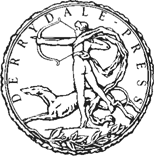
THE DERRYDALE PRESS
Published in the United States of America
by The Derrydale Press
A Member of the Rowman & Littlefield Publishing Group
4501 Forbes Boulevard, Suite 200, Lanham, Maryland 20706
Distributed by NATIONAL BOOK NETWORK, INC.
Copyright 2003 by Edith Rogovin Frankel
First Derrydale Printing 2003
Library of Congress Control Number: 2003105131
ISBN: 1-58667-101-4 (pbk. : alk. paper)
All rights reserved. No part of this publication may be reproduced, stored in a retrieval system, or transmitted in any form or by any means, electronic, mechanical, photocopying, recording, or otherwise, without the prior permission of the publisher.
 The paper used in this publication meets the minimum requirements of American National Standard for Information SciencesPermanence of Paper for Printed Library Materials, ANSI/NISO Z39.48-1992.
The paper used in this publication meets the minimum requirements of American National Standard for Information SciencesPermanence of Paper for Printed Library Materials, ANSI/NISO Z39.48-1992.
Manufactured in the United States of America.
Introducing the Mountains
Chapter 1
T he first present my husband bought me after our wedding was a pair of hiking boots. It was on our honeymoon. I was an American in my early twenties. We had just arrived in London, his hometown. He looked over the shoes that I had lined up in the closet of our London hotel room. I don't understand, he said in dismay. You knew we were going to the Lake District. You've only got high heels and a pair of Keds here. How do you expect to do any walking? I frankly hadn't realized that the Lake Districtan area in the north of England which boasts many beautiful lakeswas also the location of England's highest range of mountains. I had somehow pictured a few romantic days of pleasant rambles around some of the lakes. The idea of walking up through some very rugged terrain had not occurred to me. The idea that I needed special shoes for this came as a rude shock. Not wanting to get into an argument just days after we had pledged our undying love, I decided to accept the need for better footwear. Before I'd even gotten over my jet lag we went off to get a pair of proper walking boots.
Next page


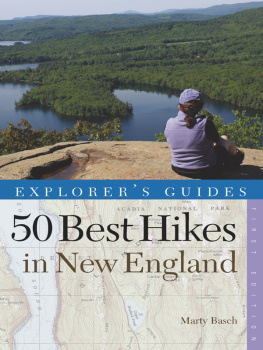


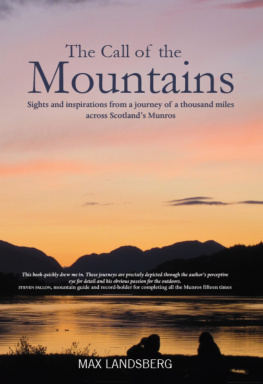
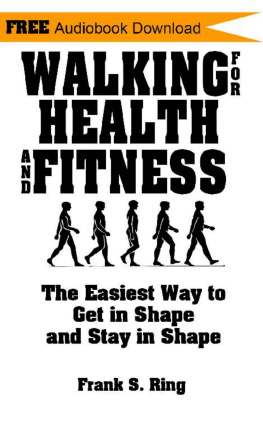

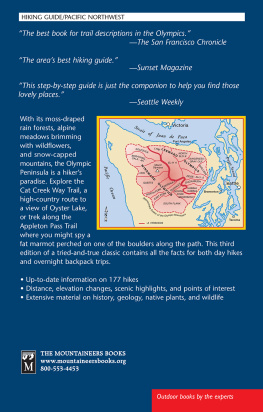



 The paper used in this publication meets the minimum requirements of American National Standard for Information SciencesPermanence of Paper for Printed Library Materials, ANSI/NISO Z39.48-1992.
The paper used in this publication meets the minimum requirements of American National Standard for Information SciencesPermanence of Paper for Printed Library Materials, ANSI/NISO Z39.48-1992.